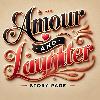Aarav's visit here marked a pivotal moment in his exploration of AI's impact on humanity. Creativity, the essence of human expression, was now being redefined in partnership with machines. He was eager to understand whether AI was a tool for enhancing imagination or a competitor challenging the very idea of human ingenuity.
Aarav stopped at a corner where an artist, Neha Kapoor, was demonstrating how she created her work using AI tools. Her painting, a blend of abstract colors and vivid details, seemed to shift and shimmer under the gallery lights.
"I call this one Ethereal Minds," Neha said, smiling. She showed Aarav her tablet, where an AI program had suggested color palettes and shapes based on her initial sketches.
"The AI doesn't create the art," Neha explained. "It offers possibilities, expands my imagination. I still make the final decisions."
Aarav asked if she ever felt like the AI was taking over her creativity. Neha shook her head. "Not at all. It's like having a muse that never runs out of ideas."
Aarav jotted: AI enhances creativity, offering tools and inspiration without replacing human intent.
In another room, Aarav met Ayaan, a music producer who had composed an entire album using AI. He played a track, its melodies haunting yet intricate, blending traditional Indian instruments with modern beats.
"This is my collaboration with Harmonia," Ayaan said, pointing to a laptop running the AI software. "I feed it ideas - a mood, a theme - and it generates patterns and harmonies."
Ayaan described how the AI had helped him explore musical styles he'd never considered before. "It's like having access to the wisdom of every composer in history," he said.
But Ayaan also voiced a concern. "The danger is losing the personal touch. AI can compose, but it doesn't have a soul. That's what we bring."
Aarav wrote: AI in music broadens possibilities but cannot replicate emotional depth.
Aarav's journey continued to a writers' workshop where participants were experimenting with AI-powered writing tools. He sat with Radhika, an aspiring novelist, who showed him how she used an AI to brainstorm ideas and structure her plot.
"I was stuck on my story for months," Radhika said. "Then this tool suggested a twist I'd never thought of."
The software highlighted trends in popular genres, helping Radhika refine her narrative. But she admitted it wasn't perfect. "Sometimes, it feels formulaic. The AI doesn't understand nuance or subtext the way a human does."
Aarav noted: AI aids writers by breaking creative blocks but lacks the subtlety of human storytelling.
In the gallery's central hall, Aarav attended a panel discussion on the ethics of AI in creativity. Artists, technologists, and curators debated whether AI-generated works could truly be considered art.
"Art is about emotion and intent," said Meera, a sculptor. "Can a machine feel or intend? If not, how can its creations be art?"
A technologist countered, "AI is a tool, like a brush or a chisel. The art lies in how humans use it."
The debate shifted to issues of authorship and ownership. Who owns an AI-generated piece - the artist, the programmer, or the machine itself?
Aarav wrote: The intersection of AI and art raises profound questions about authorship, intent, and the essence of creativity.
Next, Aarav visited an online platform where users could create digital art, music, and stories with AI tools. The platform's founder, Arjun, described it as a democratization of creativity.
"Not everyone has access to art schools or expensive tools," Arjun said. "AI makes creativity accessible to anyone with an idea."
Aarav watched as a teenager from a rural area used the platform to design a poster for her school play. "This is her first time creating something like this," Arjun said. "That's the power of AI - it opens doors."
But Arjun acknowledged a challenge. "We need to ensure these tools don't undervalue the work of professional artists."
Aarav jotted: AI democratizes creativity but risks devaluing traditional craftsmanship.
Aarav's next encounter was with Maya, a virtual influencer created entirely by AI. Maya had millions of followers on social media, endorsing products, sharing "life updates," and interacting with fans.
"She's not real, but people connect with her," said Kavita, the creator behind Maya. "She represents inclusivity and positivity."
However, Kavita admitted there were ethical concerns. "We're blurring the line between authenticity and fabrication. How do we ensure transparency?"
Aarav noted: Virtual influencers challenge notions of authenticity in the digital age.
Aarav ended his day at a digital archive where AI was being used to restore and preserve historical artworks. He met Ravi, a conservator, who showed him a centuries-old manuscript reconstructed using AI.
"The AI analyzed fragments and recreated missing sections," Ravi explained. "It's like giving history a second chance."
But Ravi also emphasized the importance of oversight. "The AI doesn't always get it right. We ensure the integrity of the original work is never compromised."
Aarav wrote: AI preserves history, blending innovation with responsibility.
As Aarav left the gallery, the night sky shimmered above him. Creativity, he realized, was entering a new era - one where humans and machines worked hand in hand. AI was not a replacement for imagination but a catalyst that expanded its boundaries.
In his notebook, Aarav penned: AI is a collaborator, not a creator. It pushes the limits of what's possible but cannot replicate the human soul behind true artistry. The future of creativity lies in balance - a symbiosis of innovation and humanity.
This chapter highlighted the transformative potential of AI in creative fields while grappling with its ethical and emotional implications. Aarav walked away with a renewed appreciation for the resilience of human ingenuity, even in an age of machines.





